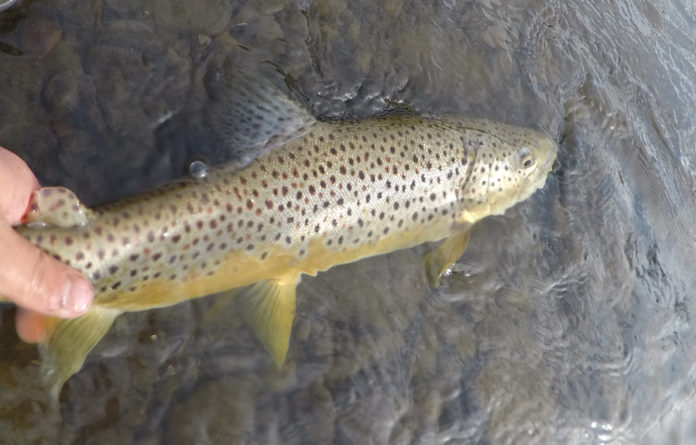Mayflies are a crucial food source for a wide variety of fisheries, occupying various aquatic niches–from cold rivers to warm, still waters–in all 50 states. With over 600 species in the US alone, hatching from early spring through late fall, there is always a relevant mayfly species to imitate. But the US is a big place, so anglers’ experiences are likely to be quite different from one state to another. This post is part of an ongoing series that explores the great variety of mayfly hatches in different states, in order to give fly anglers a broader view of mayfly fishing across the country.
This week, our featured region is the Adirondack Mountains of New York. We were lucky enough to get some time with Ken Kalil of Kalil’s Upstate Outfitters, who has been guiding the rivers of the Adirondacks for over 25 years. Ken provides an excellent breakdown of the most consistent regional mayfly hatches below, along with some well-seasoned advice on how to imitate them, and when to start looking. Hopefully this information will be useful not only for anglers in the Empire State, but also for anyone who is seeking a more comprehensive understanding of mayfly fishing.
1. What are some of the most important mayfly hatches in your region, and when do they typically start?

The three most consistent and widespread mayfly hatches in this part of New York are Hendricksons, pale evening duns, and blue-winged olives. Some are relatively underrated compared to more famous hatches, such as green drakes, but they last longer and happen more readily–meaning you’ll have more days when these bugs actually show up. Furthermore, because these mayfly species are so prolific here, you can still fool fish with these patterns even weeks after a specific hatch has ended.
Hendricksons arrive first, usually around mid-May, although high water can delay the timing of the hatch. This species is very important regionally, with fish becoming well-imprinted on these patterns.
Pale evening duns begin to hatch a little later in the summer, when the water warms up. They’re around for a relatively long time, several weeks, so you’re likely going to have a fair number of fishable days with PEDs when conditions are right.
Blue-winged olives emerge all year in different sizes, but during the fall, when fewer other bugs are hatching, warm days can produce great numbers of these elegant mayflies. Mild days that are overcast with low wind are best.
2. What are some of your favorite local fly patterns/variants to imitate these mayflies?

I stick mostly to classic patterns, since I don’t think the fish see them as often anymore. I like to use a Red Quill to imitate Hendrickson duns. Another good pattern to carry is the Mahogany Spinner, since the spinner fall can be important too, and it’s nice to have a pattern to cover that stage of the hatch. If emergers are on the menu, an unweighted Zug Bug in size 12 can work surprisingly well.
For pale evening duns, I like a local variant called The Usual, a Francis Betters pattern, in size 16. Comparadun and Sparkle Dun patterns also work well. Our fall blue-winged olives are considerably larger than others, averaging size 16, so we often use the same patterns we use for the PEDs.
3. Tell us about a memorable fish or day you’ve had using one of the flies described above.

I don’t know if I have one memorable fish in particular. What I’ve found is that when these hatches are happening, every fish in the area will be fired up, making it hard to remember one specific catch. There are just so many! To me, the most memorable catches were often when I was in a pinch, grabbed a few flies running out the door to get my daily fishing in, and improvised successfully, catching that big brown that was clearly focused on emergers. If you catch that stage just right, when the nymphs are having a hard time shedding their shucks and remain vulnerable for extended periods of time, it can be a real treat.
Credit: Source link































